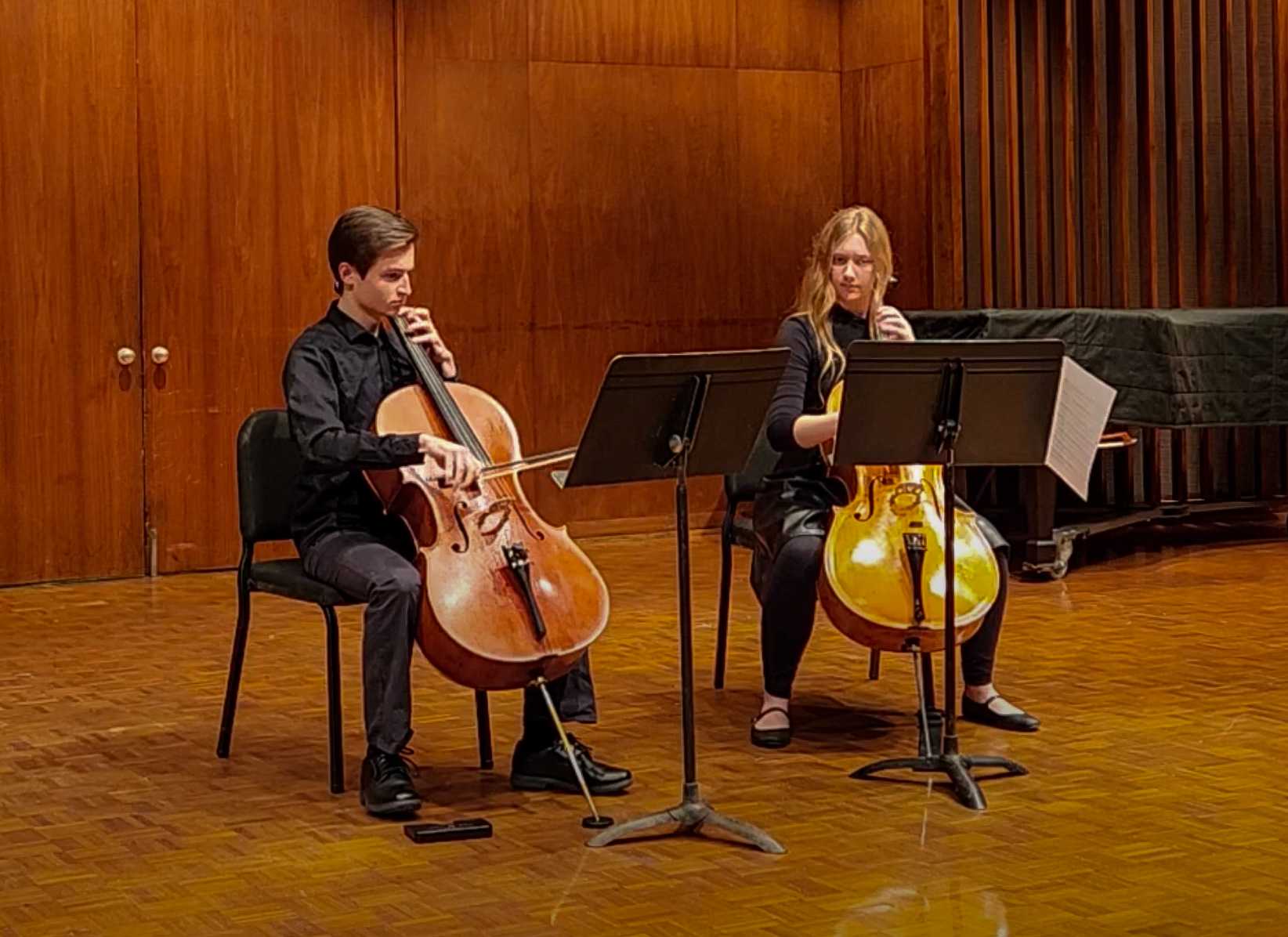Students from visiting Professor of Music Taide Prieto’s cello studio gave a recital of selected etudes by Jean Louis Duport (1749 – 1819) in Harper Hall on Sunday, Jan. 15. This is Prieto’s first year teaching at Lawrence, and in addressing the audience at the beginning of the performance, she expressed excitement and gratitude at being welcomed into the community before proceeding to give context about the program.
Prieto explained that Duport was a Classical French cellist, composer and pedagogue whose 21 cello études, of which nine were selected for this program, were written with the intention of improving left-hand technique and bowing technique. While these infrequently performed pieces do offer the technical challenges characteristic of etudes, Prieto also noted that their beauty made them appropriate concert pieces.
With one exception, each étude was performed by two cellists, one playing the melody while the other played an accompaniment. Most of the students played twice, giving them the opportunity to play the melody in one etude and accompaniment in another étude with a different partner.
First on the program was Duport’s second Étude, played by first-year David Smith and sophomore Annika Schmidt. Marked allegro, this piece had a light and cheery character throughout its many arpeggio and scalar passages. There were some unaccompanied moments in which the melody was virtuosic and higher in the cello’s range, while at other times the melody became somewhat more lyrical and the accompaniment maintained the piece’s constant sense of motion.
Étude 11 was next, played by sophomore Arthur Johnson and sophomore Nick Chrisman. This piece was again marked allegro and shared some character similarities with the previous étude. Its opening featured several rapid ascending lines high into the cello’s range that gave the piece a daring quality. A contrasting second section had a sincere cantabile feel, before the piece regained its previous audacity.

Third on the program, and also marked allegro, was Étude 13, played by sophomore Caitlin Forbes and sophomore Laurel Thompson. Like the two pieces before it, this etude kept a healthy momentum throughout, though it seemed slightly more peaceful, like a creek flowing over rocks. The occasional trill lent a giddy, carefree nature to the piece.
Thompson was then joined by sophomore Troy Cassidy for Étude 5, this time marked moderato. At the beginning of this piece, repetitive ascending and descending patterns of small intervals created tension and suspense, not unlike the Jaws theme song. The piece then transitioned to a bolder, coursing quality with a present bass line.
For Étude 8, marked adagio cantabile, senior Nora Briddell performed solo, playing both the melody and accompaniment of the piece. As the only solo piece on the program, this etude had a fitting solitude to its character, with a reflective, even mournful melody, and a humble, staccato accompaniment.
Cassidy joined Briddell onstage for Étude 9, marked allegro moderato. Both cellists displayed a clear sense of confidence and investment in the piece through their body language, which translated into their playing as well. Throughout significant contrasts in dynamics and timbre, they infused the piece with focused, intense energy and gave it a full sound which seemed to exceed that of the two cellos onstage. This intensity was interrupted by a slower solo section by Cassidy before jumping back into a vibrant accompanied section.
First-year Nicole Frias and first-year Alice Miller performed Étude 3, another allegro. Unlike the other pieces on the program, the cellos in this étude exchanged the melody and accompaniment between them, taking turns on each part. One part consisted largely of rapidly ascending chromatic lines, while the other was more grounded and mostly lower in the cello’s range, adding warmth and richness to the piece.

Étude 4, marked allegro moderato et trés-marqué, was then performed by Schmidt and Johnson. This piece began heartily and with a sense of constant motion; a passionate and busy melody was tempered by slower-moving, longer lines in the accompaniment. After this exuberant first section, the piece concluded in a more somber mood, with both cellos in harmony.
The final piece of the program was Étude 6, played by Chrisman and Johnson. This piece’s airiness and many trills gave it a sense of playfulness and perhaps irreverence. I imagined somebody skipping joyfully down the street while carelessly ignoring whatever work they should have been up to.
For me, this program served as a pleasant and concise hour-long introduction to Jean Louis Duport, a composer with whom I had not previously been familiar. As a recital composed entirely of études by a single composer, many of which were rather similar in character, the performance lacked somewhat in variety. However, some pieces did present contrasting moods so that the program overall did have a range. While the level of technical difficulty was apparent at times, it did not interfere with my enjoyment of the recital.

